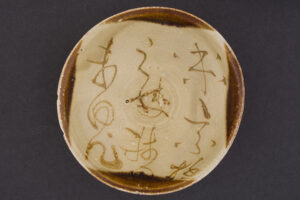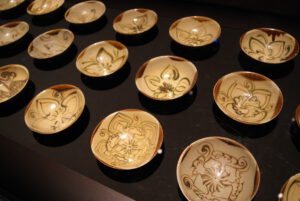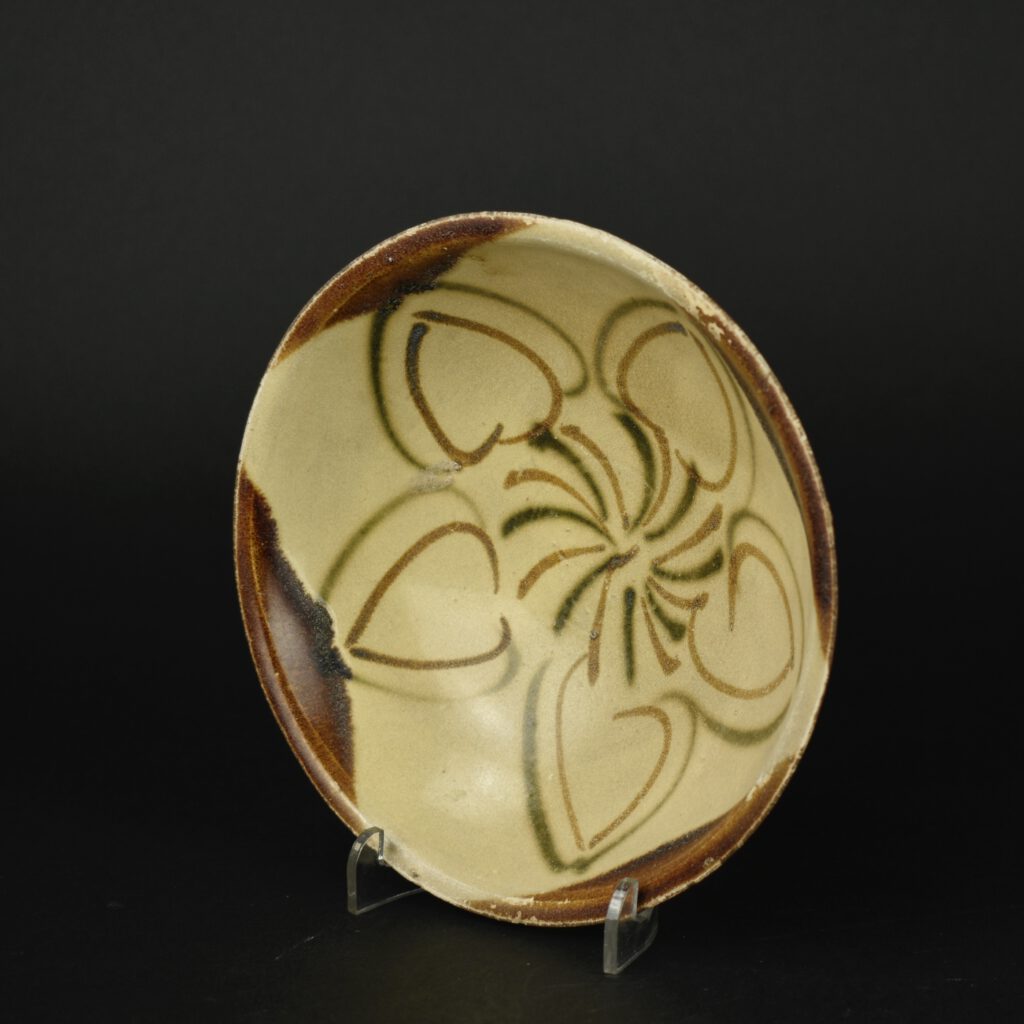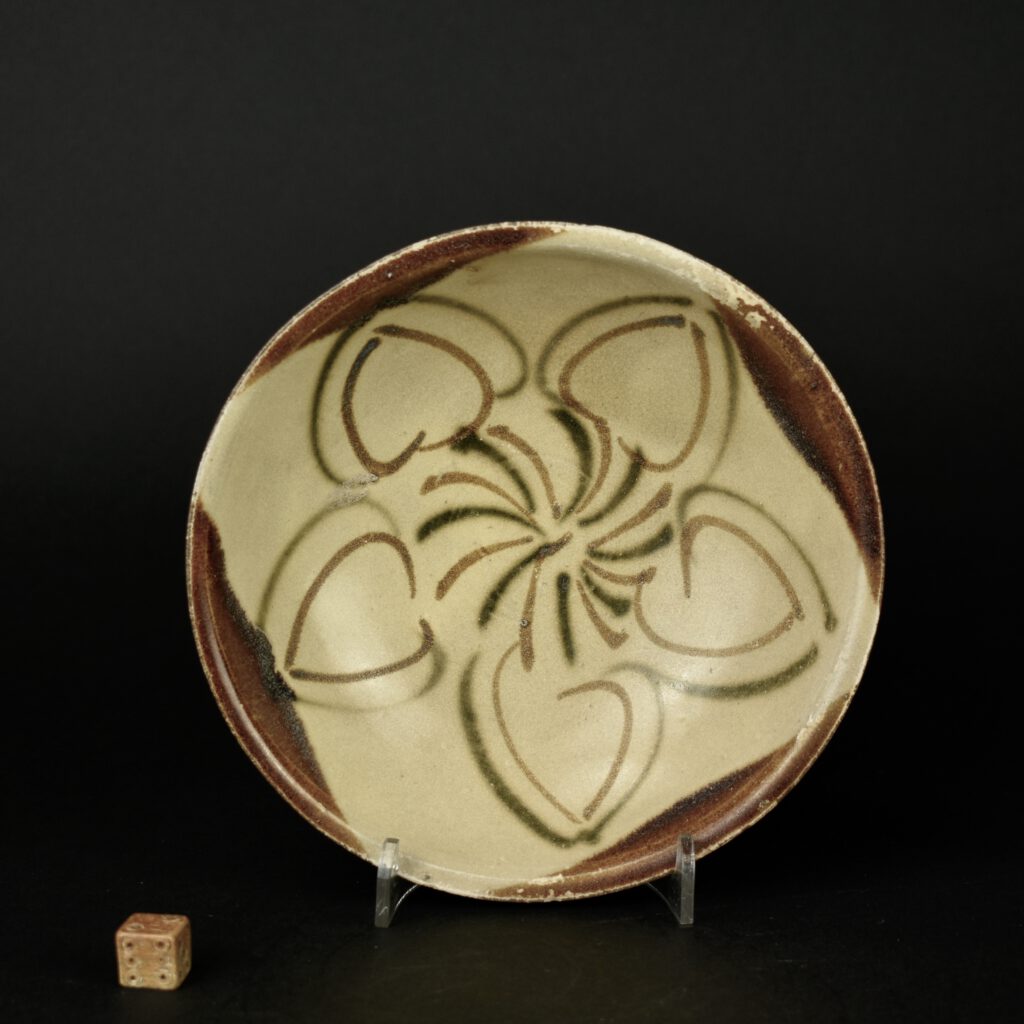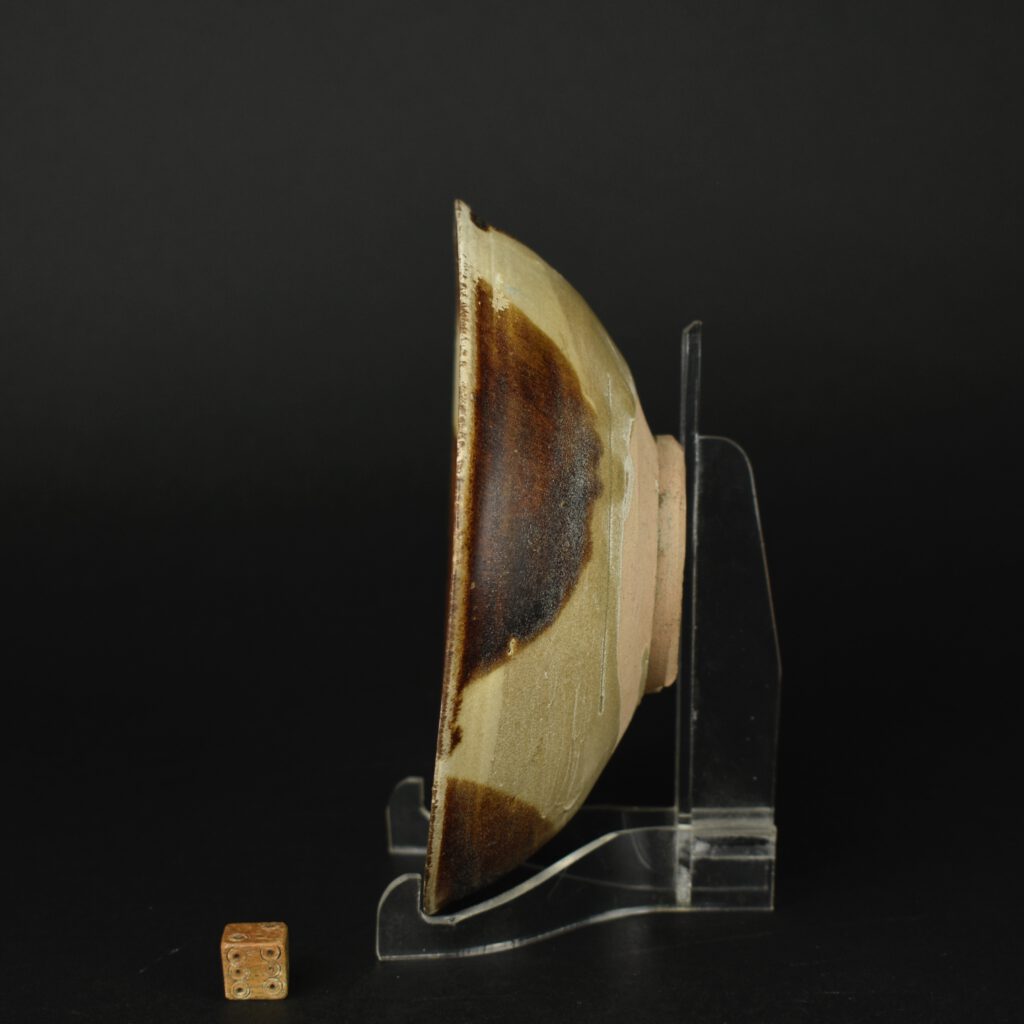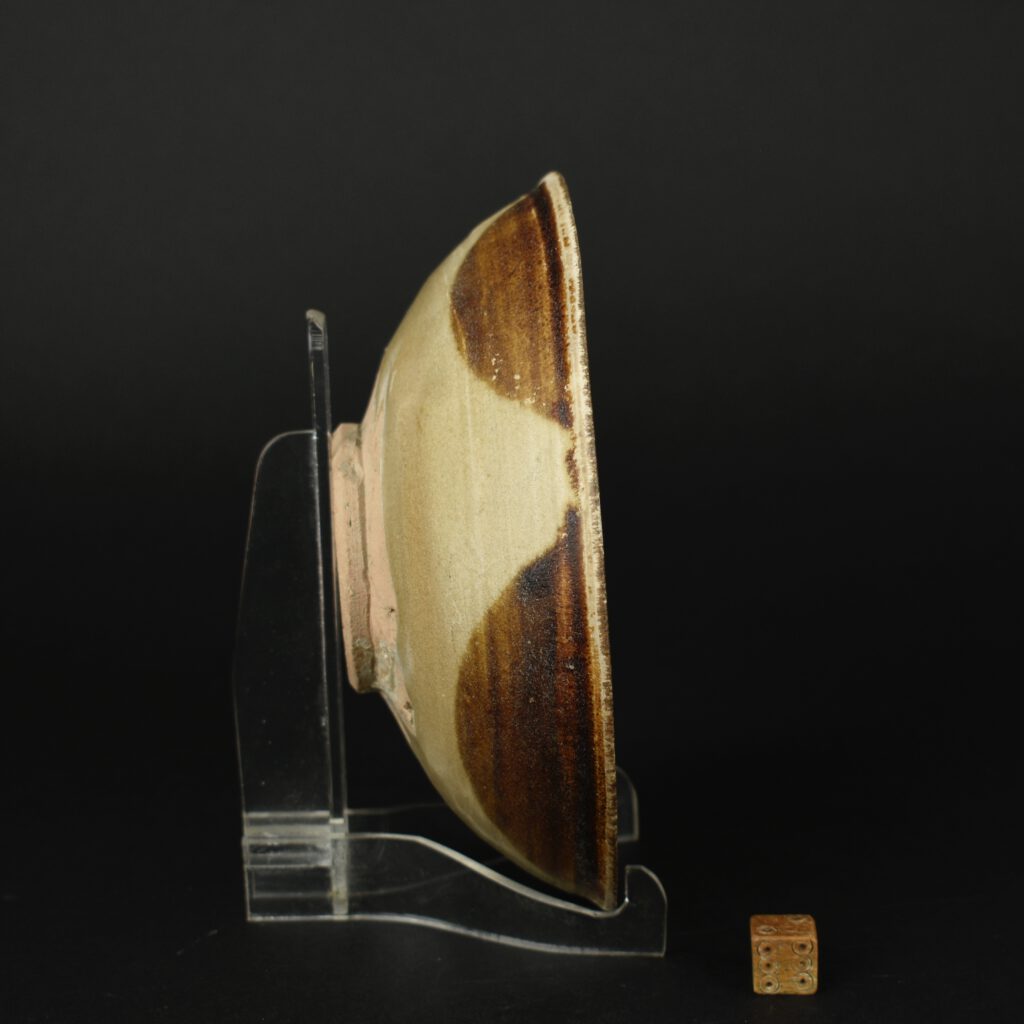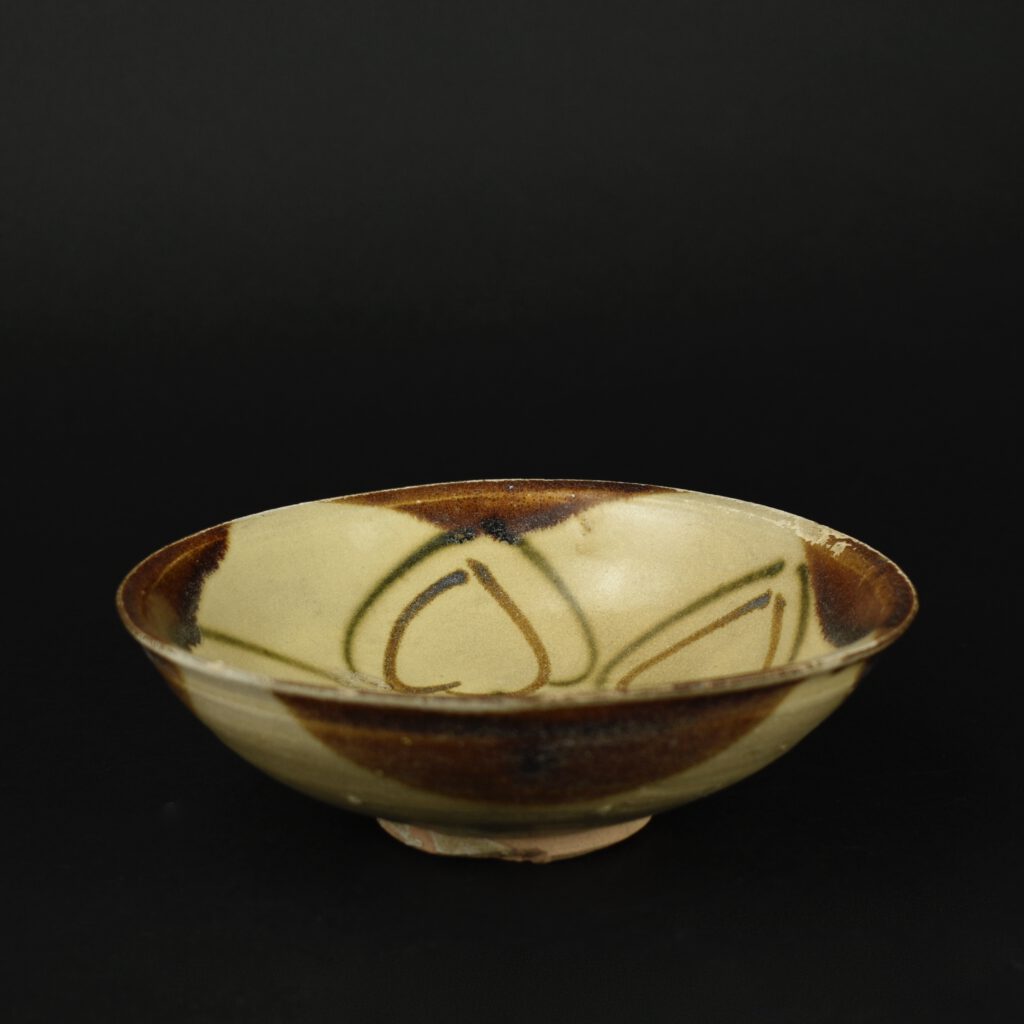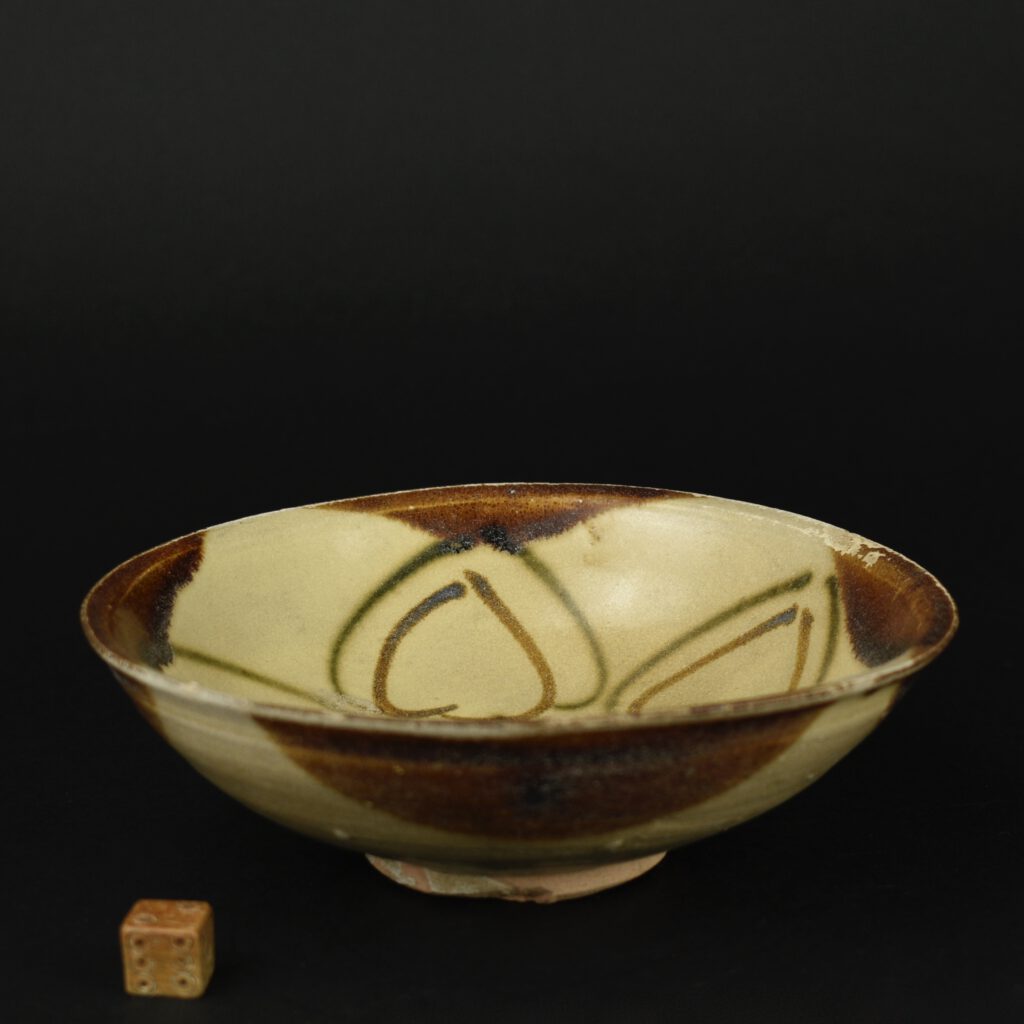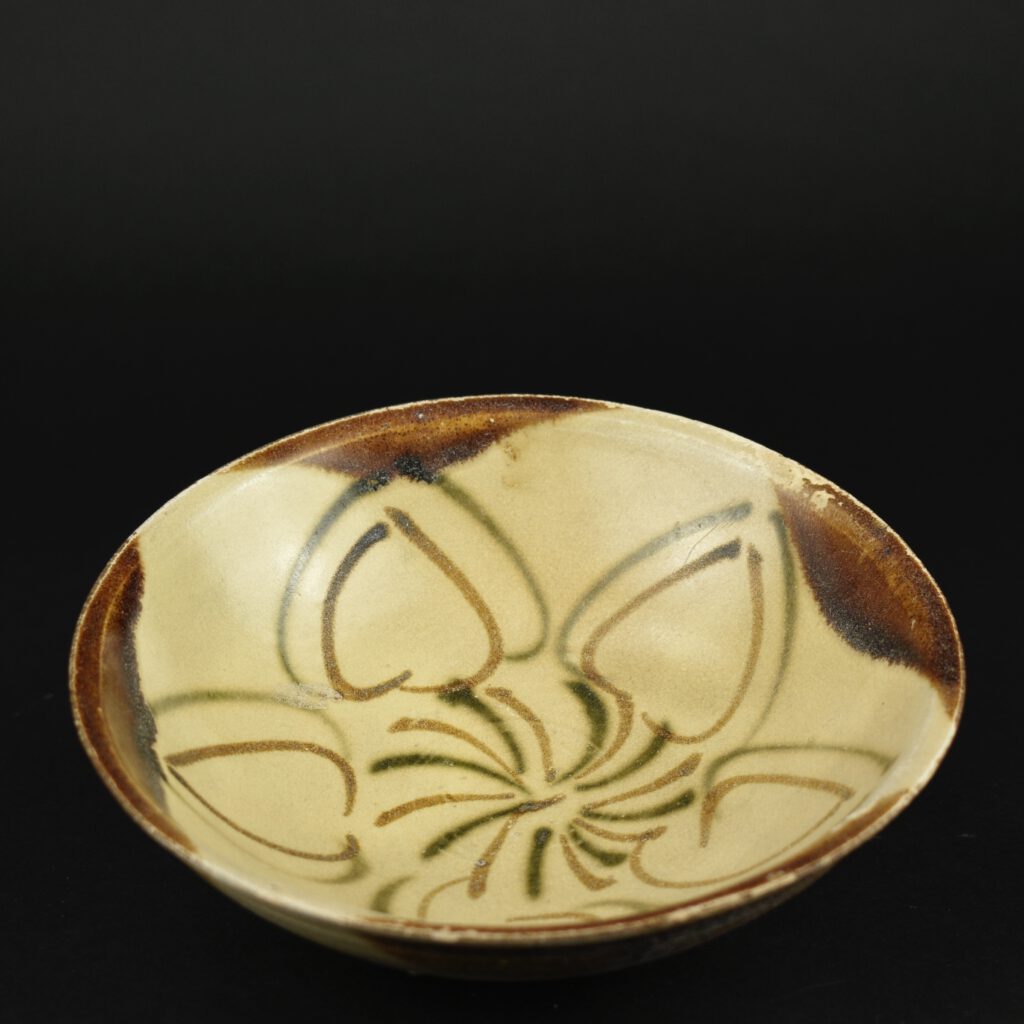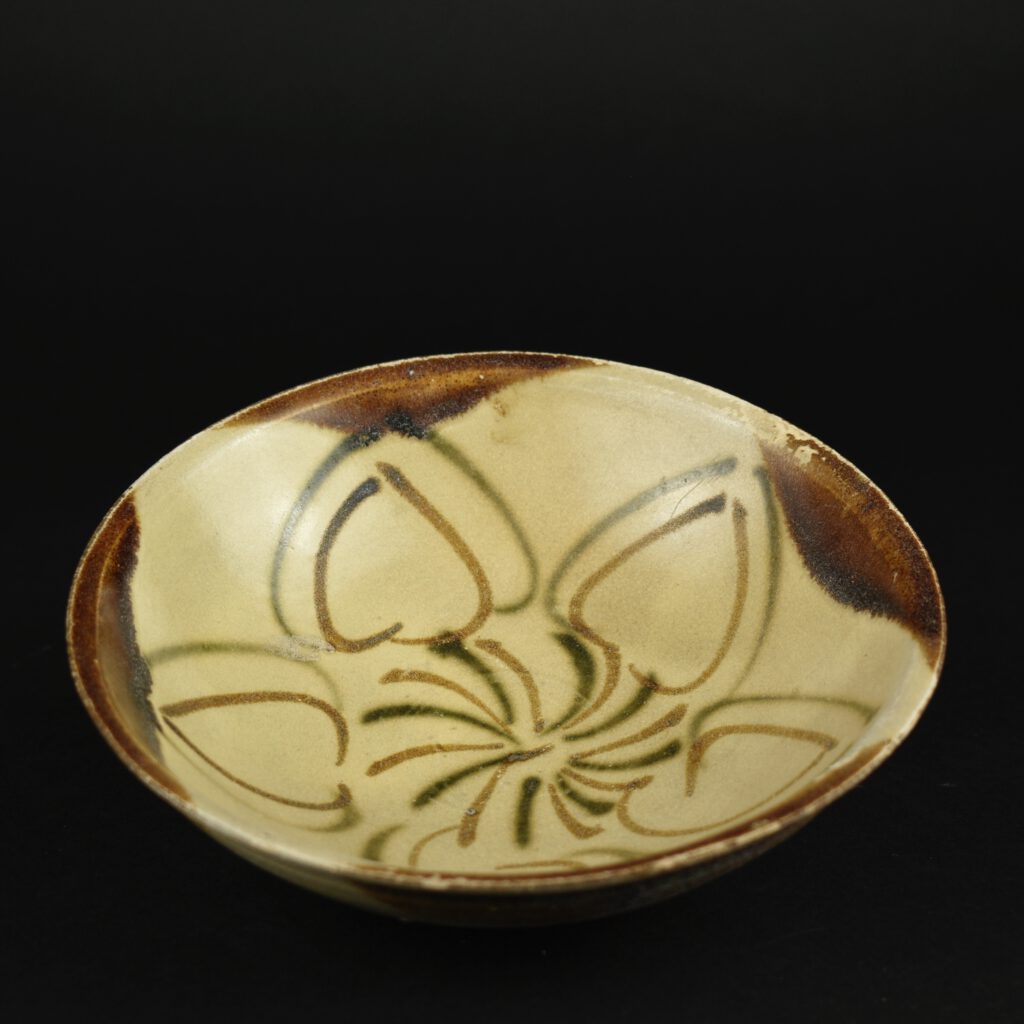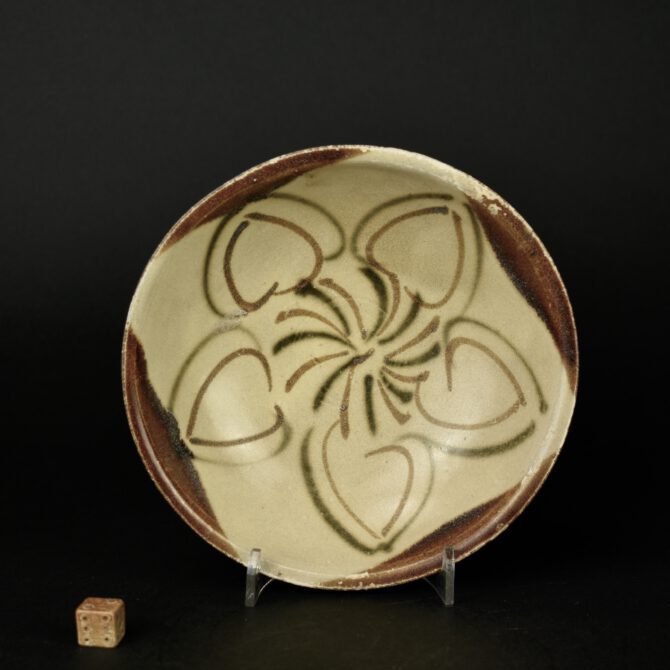
A Late Tang Changsha Bowl
A Late Tang Changsha Bowl, Changsha Kilns, Hunan Province, c.830. The edges have been dipped in four places with brown, probably iron-oxide. The well of the bowl is freely painted in green and coffee coloured brown.This underglaze decorated Tang bowl probably comes from the Belitung shipwreck. Changsha pottery was important in that it was the first type of pottery to employ underglaze decoration on a large scale. The Belitung shipwreck is also known as the Tang or Batu Hitam Shipwreck. A Changsha bowl was recovered from the Belitung shipwreck, it is inscribed with a date equivalent to 826, a carbon 14 analysis of the wreck also confirms a Tang date (618 – 907). The Belitung shipwreck was found by fishermen off the Indonesian Island of Belitung in 1998. For more information see below the photograph gallery.
SOLD
- Condition
- Very good condition, minor flaking of glaze to the rim, this is a typical Changsha trait.
- Size
- Diameter 15.4 cm (6 inches).
- Provenance
- N/A
- Stock number
- 26114
Information
Belitung Shipwreck :
The Belitung shipwreck (also known as the Tang or Batu Hitam Shipwreck). Another bowl from the Belitung shipwreck is inscribed with a date equivalent to 826, a carbon 14 analysis of the wreck also confirms a Tang date (618 - 907).
The Belitung shipwreck was found by fishermen off the Indonesian Island of Belitung in 1998. The German group, Seabed Explorations, purchased the location from the fishermen and began excavation under license in the latter part of the same year. It seems that the Belitung shipwreck is the only example of an ancient Arab ship ever found. The extensive hull remains were stitched together. Its location in Indonesian waters, and its cargo of Chinese ceramics, provide archaeological evidence for direct trade between the Western Indian Ocean and China in the first millennium, although this is subject to some speculation. The ship was a West Asian vessel constructed from planks sewn together with rope — and its remarkable cargo originally included around 70,000 ceramics produced in China, as well as luxurious objects of gold and silver. The discovery of the shipwreck and its cargo confirmed what some previously had only suspected: overland routes were not the only frequently exploited trade connections between East and West in the ninth century. Whether the vessel sank because of a storm or other factors as it traversed the heart of the global trading network remains unknown. Bound for present-day Iran and Iraq, it is the earliest ship found in Southeast Asia thus far and provides proof of active maritime trade in the ninth century among China, Southeast Asia, and West Asia.
